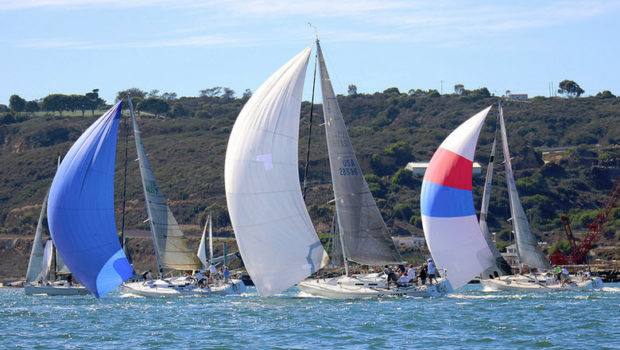Why PHRF is Suffering – Part 3
Published on April 6th, 2017
PHRF isn’t suffering because of PHRF. PHRF suffers when its use misses the target. Bruce Bingman, chair of the US PHRF committee, provides some thoughts on improving participation.
Classes: If at all possible, classes should be set up racing like boats against each other and separating the ‘performance cruisers’ from the ‘pro’ racing programs. You wouldn’t race your Minivan against a NASCAR Sprint Car, so why would you race a Beneteau Oceanis 473 with older dacron roller furler sails against a J-109 or a FARR 280 with a new set of carbon string sails?
The old line of thinking was to have tight class splits, even if it meant putting dissimilar boats together, but experience at both Key West and Block Island Race weeks has shown it is better to race like boats with wider splits than dissimilar boats with narrow splits.
Courses: Our survey results tell us the serious racers want multiple drop mark W-L courses but the vast majority of recreational sailors want a single Government mark course. Here’s a thought – send everyone to the same (drop) weather mark and then send the cruising classes on a tour of the buoys while letting the racing classes do windward-leeward courses. This has proven to be a very successful compromise at Block Island Race Week with growing classes in both segments.
Time: We are much busier than when our parents grew up. Frequently the only sporting activity on the weekend was going out for the day races on the boat. Today we have everything from swim meets to lacrosse games competing for the kid’s time, and house and garden for the parent’s time. Doesn’t it make sense to have a later start and maybe only one day of racing on the weekend?
Certainly the short race format of weeknight racing has shown almost the only growth in participation. In the case of ‘venue’ races, for many of the competitors, this is their vacation. While the “pros” will want to race three or four drop mark races from 10 AM to 5 PM and then debrief, many (most?) of the competitors would prefer fewer races, getting off the water to do some sightseeing and going to the afterparty for camaraderie and libations.
Pursuit Starts: Another way to get the reluctant racer out is to have some pursuit starts on fixed Government mark courses.
This has the double advantage of making the starts much less frightening and starting the slower boats first so they get the advantage of sailing in clear air, at least for a while. It also forces the faster boats, which typically turn out to be the more prepped racer types, to pick and weave through the fleet in dirty air so takes away some of their prep/racer advantage.
The order of finishers is the placing order so everyone knows where they stand like in a One-Design race. In fact this seems to work well and these are frequently the most popular races of the year as seen in San Diego and the Chesapeake.
Conclusion: Clearly the best racing comes when boats of similar sailing characteristics are racing each other. It is nearly impossible to fairly rate light displacement boats against heavy displacement boats and these should be separated into different classes if at all possible.
Likewise, it is very difficult to fairly rate boats once speed differentials become more than a minute a mile, even if their sailing characteristics are identical. Use of a one (or 2) number system like PHRF makes this sort of class arrangement even more important.
But the decline in the number of boats racing makes splitting into multiple classes difficult and thus unhappiness with ratings occurs. Getting boats back into PHRF will quickly improve racing for everyone.
Editor’s note: This is the third of a three part series. Here is Part 1 and Part 2.









 We’ll keep your information safe.
We’ll keep your information safe.